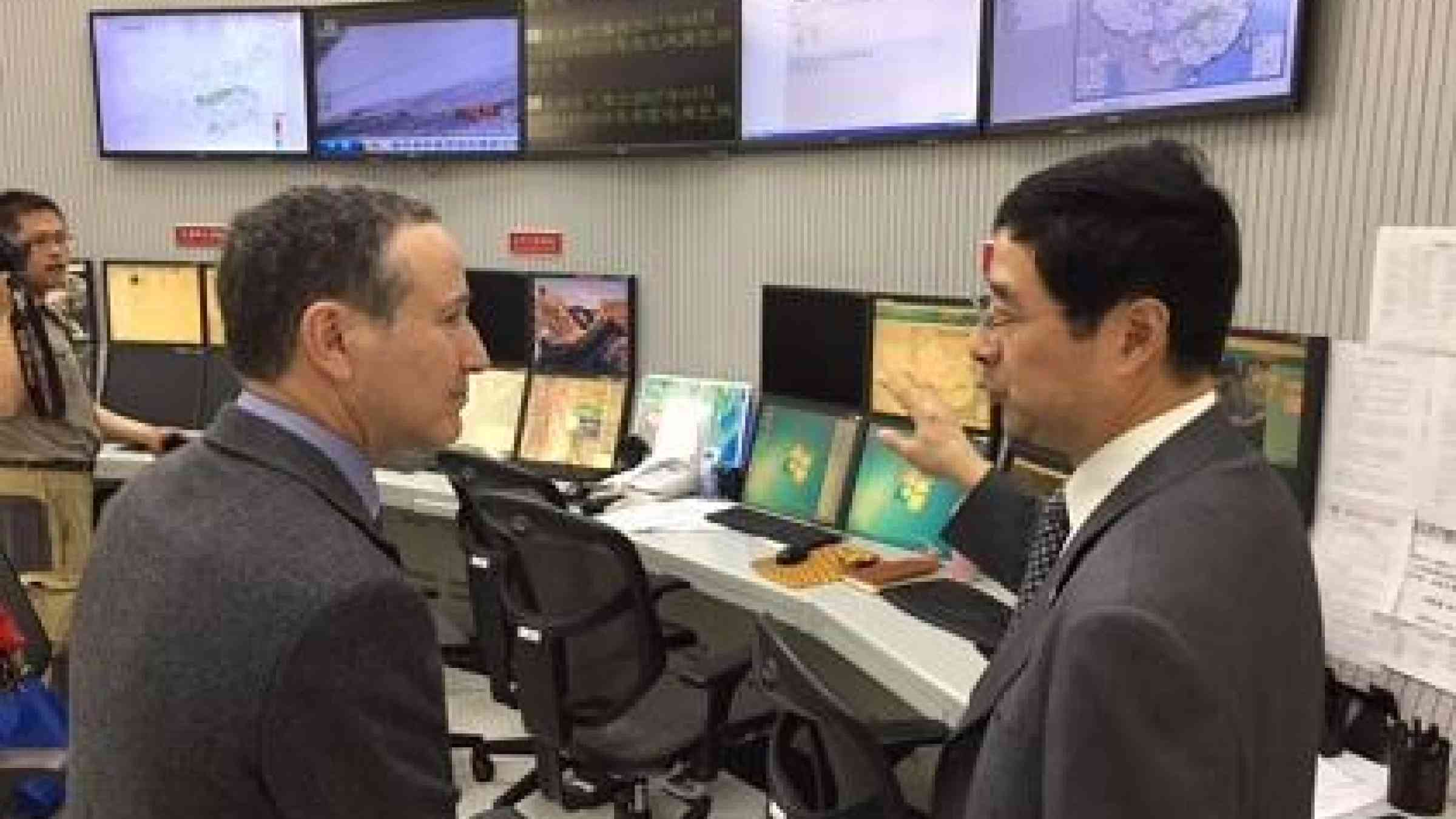China reaffirms disaster risk cooperation commitment

BEIJING, 16 May 2017 – China’s Minister of Civil Affairs has reaffirmed his country’s commitment to increasing international cooperation to address the common challenge of disasters.
Speaking in the lead-up to next week’s 2017 Global Platform for Disaster Risk Reduction, in Mexico, Mr. Huang Shuxian said China was willing to share its great experience of tackling disaster risk and expand regional and international collaboration in this regard.
The minister’s remarks came at a high-level meeting in Beijing with the United Nations Secretary-General’s Special Representative for Disaster Risk Reduction, Mr. Robert Glasser.
“China has a good tradition of cooperation in disaster risk reduction and we want to further this. Since the Wenchuan earthquake in 2008 we have accumulated a lot of experience and made great achievements on disaster risk reduction, which has increased significantly in importance,” Mr. Huang said.
The Wenchuan earthquake killed 68,712 people, while another 17,912 were listed as missing. One of China’s worst disasters in recent decades, it propelled the country’s transformation from a disaster management approach towards one of disaster risk management.
Minister Huang told Mr. Glasser, who is also the head of the United Nations Office for Disaster Risk Reduction (UNISDR), that China “sincerely appreciated” its strong partnership with UNISDR over recent years, saying that it had helped to improve his country’s work to curb disaster risk.
Mr. Glasser responded by underlining the significant progress in the country over recent years. “China has shown remarkable leadership in terms of disaster risk reduction in several areas and it has a huge opportunity to share this regionally and, of course, at the Global Platform,” he Glasser said.
He highlighted several examples, including: China’s setting of national targets, including limiting economic losses from disasters to within 1.3% of GDP; how in 2005 China provided the global lead in initiating the now established system of regional disaster risk reduction platforms; the influence of science and technology on policymaking; and the rapid reconstruction after the Wenchuan earthquake.
Both the Minister and Mr. Glasser looked forward to UNISDR and the Ministry of Civil Affairs, along with Beijing Normal University, co-organizing the 2nd Asian Science and Technology Conference for Disaster Risk Reduction, in Beijing, in April 2018.
Mr. Glasser followed his meeting with Minister Huang with a tour of three of the Ministry of Civil Affairs’ key disaster risk reduction-related institutions.
At the China Earthquake Administration, which has 10,000 staff, its director, Professor Guoguang Zheng, said the increasingly trans-boundary nature of many disasters was one factor in China’s growing commitment to international cooperation on reducing risk.
“The case for greater collaboration is strong because many earthquakes, as well as other hazards, have no international boundaries,” Professor Zheng said.
He cited China’s development of a 12,000-strong search and rescue corps after the Wenchuan earthquake. It includes a specialized team of 480 personnel for international deployment, whose members have responded to earthquakes in Haiti in 2010, New Zealand and Japan in 2011, and Nepal in 2015, among other disasters.
At the China Meteorological Administration, which has a headcount of 70,000, the deputy director, Mr. Shen Xiaonong, said collaboration was an important part of their approach: “We have several international partnerships because we want to cooperate. We want to use the same data. We want to use the same models. This way everyone benefits.”
He said an ongoing US$15 million programme to build capacity in national meteorological offices in seven African countries was one such initiative.
On the third leg of his tour, Mr. Glasser visited the National Disaster Reduction Centre. There, its senior official, Party Secretary Mr. Yin Benjie, outlined its overall role to collect and analyse disaster data and coordinate initial relief efforts.